Mexican Easter traditions bring together strong Catholic faith, deep history, and close family ties. Easter in Mexico is more than a single day. It spans several weeks, mixing quiet religious moments with lively events and plenty of good food. Almost 80% of people in Mexico identify as Roman Catholic, and many take part in customs that remember the Passion, death, and resurrection of Jesus Christ. It is one of the most important holidays in the country, second only to Christmas.
The season features candlelit processions, dramatic reenactments, and local customs that change the look and feel of towns and cities. Rooted in Spanish colonial history and blended with Indigenous traditions, these events leave a strong impression. From the silence of Good Friday to the joyful sound of church bells on Easter Sunday, Mexican Easter shows deep faith, community spirit, and long-standing customs.
What Are Mexican Easter Traditions?
Religious and Cultural Significance
In Mexico, Easter, called Semana Santa (Holy Week) and Semana de Pascua (Easter Week), is both a religious and cultural season that shows the country’s spiritual core. Most Mexicans are Catholic, and their faith shapes these days. The season follows the Bible story of Jesus Christ’s final days, from his welcome in Jerusalem to his crucifixion and resurrection.
These traditions are a mix of Spanish practices introduced during the conquest and adaptations formed during evangelization, along with Indigenous influences. This blend creates celebrations that are deeply respectful and distinctly Mexican, full of symbols, group participation, and a strong focus on family. People use this time for reflection, penance, and a joyful welcome of new life.
Traditional Celebrations Throughout Mexico
Across the country, Easter is marked with great energy and ceremony, spanning several weeks. It often begins with Carnival, a time of dancing, food, and parties before Lent starts. Then comes Lent, a 40-day period of fasting and penance that leads to Holy Week, the peak of the season.
During Holy Week, nearly every community holds public events. You’ll see processions, Passion Plays that retell Jesus’s last days, and many local customs that vary widely. From Mexico City to small colonial towns, the mood mixes devotion with anticipation. The celebrations often continue into the week after Easter Sunday, called Semana de Pascua, which is a time to relax, gather with family, and often go to the beach, moving from solemn rituals to a more festive feeling.
Which Holidays Shape Mexican Easter Traditions?
Lent and Its Observance
Lent, or Cuaresma, is a 40-day period before Easter that starts on Ash Wednesday (Miércoles de Ceniza) and runs until Easter Sunday. It recalls the 40 days Jesus spent fasting in the desert and is a time of prayer, penance, and fasting for Catholics. In Mexico, many people simplify their routines and adjust their diets.
A key Lenten practice is avoiding red meat on Fridays. This leads to creative cooking with vegetables, fish, and shellfish. Seafood dishes, empanadas de vigilia (meatless turnovers), and other vegetarian foods become popular. On Ash Wednesday, many Catholics go to church to receive ashes in the shape of a cross on their foreheads. Many keep the ashes on all day as a public sign of repentance.
Palm Sunday (Domingo de Ramos)
Palm Sunday, or Domingo de Ramos, begins Holy Week and remembers Jesus’s entry into Jerusalem, where people laid palms before him. In Mexico, churches are decorated with many palm leaves, and special masses are held where people receive blessed palms.
Many worshipers wave their palms as they enter church, singing in praise. Outside, artisans sell finely woven palm designs, which many people hang at home as crosses or wreaths to protect their homes until they are burned the next Ash Wednesday. In some places, actors portray Jesus riding a donkey, bringing the story into the streets.
Holy Week (Semana Santa)
Holy Week, or Semana Santa, is the seven days before Easter Sunday and the core of Mexican Easter. The week is busy with Masses, reflective processions, and Passion Plays. Scenes from Jesus’s final days are shown with deep respect and strong community involvement.
Catholic brotherhoods, sometimes wearing tunics and pointed hoods to stay anonymous as they worship and do penance, take a big role in the processions. Almost every procession includes an image of the Virgin Mary in mourning. This week is about religious practice and also a major vacation time. Many businesses and schools close, so families can join events or travel.

Maundy Thursday and Good Friday
Maundy Thursday, or Jueves Santo, remembers the Last Supper and the betrayal by Judas. Churches hold special masses, and some stage reenactments of the Last Supper inspired by da Vinci’s painting. Many Catholics visit and pray at seven churches in the evening, recalling the seven places Jesus went from arrest to crucifixion. From this day until Easter Sunday, church bells are often silent, adding to the solemn mood.
Good Friday, or Viernes Santo, is the most solemn day for many, honoring Jesus’s trial, crucifixion, death, and burial. Many businesses and schools are closed. Streets often host the “Passion Play,” a retelling of the Way of the Cross. Actors follow the 12 Stations as the person playing Jesus carries the cross to Calvary. From noon to 3 pm, some cities grow quiet, marking the hours when Jesus was dying on the cross. As on all Lenten Fridays, people avoid meat and eat simple meals.
Holy Saturday (Sábado de Gloria)
Holy Saturday, or Sábado de Gloria, is a day of vigil between Christ’s death and resurrection. It is a quiet, respectful day that looks back to Good Friday and looks ahead to Easter Sunday. Statues of the Virgin Mary may wear black to show mourning, and many places keep this day calm with few events.
In parts of central and southern Mexico, Holy Saturday also includes the Burning of Judas. Cardboard and paper figures, often made to look like Judas Iscariot and sometimes public figures, are burned in lively gatherings with fireworks. This stands for the punishment of betrayal and a cleansing before the resurrection, though some cities, like Mexico City, have banned it for safety and pollution reasons.
Easter Sunday (Domingo de Pascua)
Easter Sunday, or Domingo de Pascua (Domingo de Resurrección), is the high point of the season, celebrating Jesus’s resurrection. After the quiet days before, church bells ring again, and masses include joyful songs. During mass, Catholics renew their baptismal promises.
Easter Sunday is more low-key than earlier days, and it centers on family. Many families attend mass in the morning and share a big meal at home. After mass, people often gather in the streets in a cheerful mood. You won’t usually see Easter bunnies or plastic egg hunts. Instead, people enjoy street food, snacks, and ice cream. Some cities hold festivals and parades in main squares, and fireworks and dancing can continue into the night.
What Are the Key Customs During Semana Santa?
Religious Processions and Reenactments
Religious processions are a key part of Semana Santa. They are not simple parades; they are acts of faith where communities show the Passion of Christ. Participants, called nazarenos, may carry candles, torches, or heavy wooden crosses. Some do this as penance, others to honor the story. Incense fills the air, and slow drum and bugle rhythms set a serious tone.
Many processions include statues of Christ and the Virgin Mary, decorated and carried on large floats by brotherhood members. In many towns, the events follow key moments, such as Jesus’s entry into Jerusalem on Palm Sunday or his path to Calvary on Good Friday. Group participation brings people together and draws both participants and onlookers into the Easter story.
Passion Plays and Public Performances
Passion Plays bring the story of Jesus’s last days to life with strong feeling. These are often large productions with thousands of local volunteers playing Jesus, Roman soldiers, disciples, and others. The most famous is the “Via Crucis” in Iztapalapa, Mexico City, performed every year since 1843 and watched by millions. The person playing Christ carries a heavy wooden cross for more than a mile, ending with a crucifixion scene on the Cerro de la Estrella.
Some reenactments add local elements, including Indigenous touches like Aztec drums and flutes during the capture of Christ in Iztapalapa. Smaller towns also stage their own versions with local style and real devotion. These events teach the story and create a strong shared experience for both actors and viewers.
Decorating Churches and Public Spaces
Mexico’s look changes during Easter, as churches and public places receive many decorations. After the plain days of Lent, churches fill with palm leaves on Palm Sunday. Parishioners often weave the palms into crosses, wreaths, and other designs to be blessed with holy water.
Outside churches, towns like Cholula, Puebla, lay colorful designs made from sand and flower petals in the streets, set out before processions walk over them. On the Friday of Sorrows, altars appear in public squares, markets, homes, and churches to remember the pain of the Virgin Mary. These altars may include seedlings, straw flowers, and even chia figures, blending tradition with playful touches. From grand church displays to small home altars, these decorations create a wide sense of reverence and celebration.
Silence and Reflection: The Procesión del Silencio
Alongside the lively events, there is a powerful tradition of silence: the Procesión del Silencio (Procession of Silence). Brought from Seville, Spain, it is most famous in San Luis Potosí on Good Friday. Held since 1954, it is recognized as Cultural Heritage of the state.
At night, the historic center falls into complete silence, broken only by slow drumbeats and sad bugle calls. Hooded members of brotherhoods walk the cobblestone streets bearing platforms with images of the Virgin Mary and scenes from the Passion. Many carry heavy loads as a sign of sacrifice. Spectators stand in silence too, creating a very strong feeling of shared mourning and reflection. This procession is seen as second only to Seville’s and offers an intense experience of faith focused on quiet respect for Christ’s suffering.
How Do Mexican Easter Traditions Vary by Region?
Central Mexico: Iztapalapa and Mexico City
Central Mexico hosts some of the best-known and largest events. Iztapalapa, in eastern Mexico City, presents the country’s most famous Passion Play. Since 1843, more than 4,000 local residents born in Iztapalapa have reenacted scenes from Jesus’s last week, from Palm Sunday through Good Friday. The person playing Christ carries a heavy wooden cross over a mile to the Cerro de la Estrella for the crucifixion scene, drawing more than two million viewers.
Mexico City itself is often quieter during Holy Week as many people travel, but there are still observances. One example is the veneration of a purple-robed paper-mâché Christ at the San Francisco Church in the historic center. The use of Aztec drums and flutes in Iztapalapa alongside Catholic rites shows the cultural mix that defines the region’s Easter events.
Southern Traditions: Oaxaca and Chiapas
In the south, especially Oaxaca and Chiapas, Easter traditions carry strong Indigenous influences and local flavor. In Oaxaca City, Fridays in Lent include a custom where young men give flowers to young women in El Llano Park. On Samaritan Day (Dia Samaritana), the fourth Friday in Lent, churches, businesses, and government offices hand out free drinks like horchata, jamaica, and chilacayote.
The Friday of Sorrows (Viernes de Dolores) is marked with altars in public places, markets, homes, and churches to honor the Virgin Mary’s pain. In Chiapas, colonial towns like San Cristóbal de las Casas hold very solemn Holy Week events. These southern traditions highlight community, local art, and strong ties to pre-Hispanic practices woven into Christian stories.
Northern Influences: Chihuahua and Monterrey
In the north, especially Chihuahua, Easter has distinct features linked to Indigenous communities. The Tarahumara (Rarámuri) people have kept Easter rituals for nearly 400 years, focusing on the battle between good and evil. Everyone takes part-there are no spectators. Through processions, dances, and ritual acts, they show their faith and their bond with long-held beliefs. Some paint themselves white as part of the ritual.
Large cities like Monterrey can be quieter during Holy Week as many residents travel. Across the north, Easter often leans more toward community-based and Indigenous-influenced observances rather than huge public spectacles.
Unique Celebrations in Taxco and San Luis Potosí
Some towns are known for very intense Holy Week events. Taxco, in Guerrero, is famous for penitents who accept pain during processions as signs of devotion. These members, from groups like the Animas (Bent Ones), Encruzados (the Crossed), and Flagelantes (Flagellants), wear black robes and hoods. The Encruzados carry thorny blackberry canes, while the Flagelantes whip their backs-practices that have mostly faded in other parts of Mexico.
San Luis Potosí holds the most important Procesión del Silencio in Mexico on Good Friday. Hooded participants march through old streets with religious images, and only slow drums and bugles are heard. A large image of the Virgin of Solitude is often the center of attention. Both Taxco and San Luis Potosí offer strong, memorable shows of faith that draw visitors from around the globe.
What Are the Most Popular Mexican Easter Foods?
Traditional Dishes for Lent and Holy Week
During Lent and Holy Week, Mexican cooking shifts to follow the rule of avoiding meat, especially red meat. This sparks creative recipes with fresh vegetables, fish, and shellfish. A favorite is Chiles Rellenos-poblano peppers stuffed with cheese, vegetables, or seafood, dipped in a light egg batter, pan-fried, and served with a tomato sauce.
Another classic is Capirotada, a bread pudding layered with toasted bread, cheese, piloncillo syrup, cinnamon, nuts, and dried fruits. Many say each ingredient has meaning linked to the Passion. Empanadas de vigilia (meatless turnovers), often filled with seafood or sweet fillings, are also common. These dishes show how food and faith go hand in hand during the season.
Seafood Specialties: Ceviche and Shrimp
Because of Lenten rules, seafood takes center stage. With fresh fish and shellfish, cooks prepare many tasty dishes. Ceviche is popular and bright, often with prawns, crunchy carrots, onions, cucumbers, and jalapeños “cooked” in tangy lime juice. It’s a great mix of sea and garden flavors.
Grilled shrimp is another hit, sometimes marinated in sauces like Gran Luchito Crunchy Salsa Macha for extra color and taste. You’ll also find tostadas de mariscos (seafood tostadas) and empanadas de camarones (shrimp empanadas) from street vendors near churches. These dishes show how Mexican cooks turn simple ingredients into memorable meals, even with dietary limits.
Popular Dishes: Chiles Rellenos and Tacos de Papa
Beyond strict Lenten rules, many people enjoy meatless dishes that still satisfy. Chiles Rellenos remain a staple, mixing the mild heat of poblanos with savory fillings.
Tacos de Papa (potato tacos) are another favorite. They often use seasoned mashed potatoes in tortillas, sometimes lightly fried. While not only for Easter, they fit well with Lenten meals. Other common choices include bacalao (salted cod stew) and nopal (cactus). Street foods like gorditas, sopes, and esquites also feed the crowds during events.
Sweet Breads and Sweets: Capirotada and Empanadas
No celebration in Mexico is complete without sweets, and Easter is no different. Capirotada, rich in flavor and meaning, is the classic dessert of the season. With bread, piloncillo syrup, cheese, nuts, and dried fruits, it brings comfort and tradition to the table.

Sweet empanadas filled with fruit, sweet potato, or pumpkin are also popular for sharing. Traditional candies made from coconut, tamarind, and fruits are easy to find from street vendors. Easter also marks the start of the ice cream and raspados season, and aguas frescas made with watermelon, cucumber, pineapple, mango, and more help cool everyone down.
What Are Cascarones and How Are They Made?
History and Symbolism of Cascarones
Cascarones are hollowed-out eggshells, brightly decorated and filled with confetti, used mostly at Easter and on other festive days like Cinco de Mayo. They came from Spain, where people once filled eggs with scented powders. By the mid-1800s in Mexico, they became confetti-filled.
Breaking a cascarón over someone’s head is said to bring good luck and joy. It is a playful tradition that adds surprise and fun to gatherings and stands for celebration, fresh starts, and good fortune. Simple as they seem, cascarones carry strong cultural meaning and capture the cheerful spirit of Mexican parties.
Step-by-Step Guide to Making Cascarones
Making cascarones is a fun activity for all ages. Follow these steps:
- Prepare the Eggshells: Use raw eggs. Carefully poke a small hole (about pea-sized) at one end with a needle or the tip of a small knife. Let the egg run into a bowl to use later.
- Rinse and Dry: Rinse the empty shells with water, inside and out. Place them in a carton or on a rack to dry completely. This helps prevent mold and bad smells.
- Decorate the Shells: Dye with food coloring or paint with acrylics. Add simple patterns or bright colors. Let them dry fully.
- Fill with Confetti: Add colorful confetti through the hole. You can buy confetti or cut up colored paper.
- Seal the Hole: Cut small tissue-paper squares or circles. Spread a thin layer of glue around the hole and press the tissue over it.
- Final Drying: Let the glue dry. Your cascarones are ready to crack for a shower of confetti and good luck.
How Do Mexican Families Celebrate Easter?
Family Gatherings and Community Events
Family and community come first during Mexican Easter. While church events matter, this is also a time for loved ones to be together, often over two full weeks. Many Mexican-Americans travel to Mexico to be with family and share in traditions. Families go to services, join processions, and share big meals.
Community events are a key part of the season. Large Passion Plays, local processions, and festivals build a strong sense of community. After Holy Week, many families take trips during Easter Week, especially to the beach, to rest and enjoy time together.
Setting a Festive Mexican Easter Table
The Mexican Easter table looks and tastes great, reflecting bright culture and strong food traditions. While many dishes follow Lenten rules, the table still feels joyful and welcoming. Fresh flowers are common decorations that brighten the space. Favorites include sweet peas, tulips, pink roses, camellias, and daffodils.
The table often looks colorful and playful. People mix plates, cutlery, and glasses rather than matching everything. Dishes range from seafood and vegetable plates to sweet breads and desserts, all set out to celebrate the season. It shows the Mexican love of color, fun, and good food shared with others.
Gift Giving and Easter Greetings
Easter in Mexico is less about gifts and more about kind words and shared moments. People often say “¡Felices Pascuas!” (Happy Easter!) or during the previous week “¡Feliz Semana Santa!” (Happy Holy Week!). These greetings are common among family, friends, and even strangers.
Children may receive small gifts or traditional sweets, but the focus stays on being together and renewing faith. The playful cascarones tradition also acts like a small “gift,” covering friends and family with confetti and well-wishes.
How to Say “Happy Easter” in Spanish?
Popular Phrases and Regional Variations
To share Easter wishes in Mexico, use the most common phrase: “¡Felices Pascuas!” This works throughout the season, especially on Easter Sunday.
During Holy Week (Semana Santa) before Easter Sunday, many people say “¡Feliz Semana Santa!” This greeting respects the reflective tone of the week. While local styles may vary, both phrases are widely understood and welcomed across Mexico.
What Should You Know When Experiencing Easter in Mexico?
Best Places to Witness Semana Santa Traditions
Seeing Easter in Mexico offers a deep cultural experience, and your choice of place matters a lot. For the most famous Passion Play, Iztapalapa in Mexico City stands out, drawing millions. If you want intense penitential processions, Taxco in Guerrero is known for them. San Luis Potosí is known for its moving Procesión del Silencio on Good Friday, an event many visitors remember for years.
For a blend of Indigenous and Catholic practices, visit Chihuahua and the Rarámuri community for long-standing rituals. Oaxaca City offers many Lenten customs like Samaritan Day and the Friday of Sorrows, highlighting local art and community spirit. Other places with strong Holy Week events include San Miguel de Allende, Pátzcuaro, and Querétaro. Check each town’s schedule, since events can differ.
Planning Your Visit Around Holy Week
Holy Week and Easter Week (together known as Semana Santa and Semana de Pascua) are among the busiest travel times in Mexico. If you plan to visit, plan carefully and early. Hotels, restaurants, and transport book up fast, and prices-especially for lodging in popular areas-can be much higher. Book far in advance, whether you want a beach cabana or a table at a popular restaurant.
Expect crowds, especially in resort towns and tourist hotspots, as many families travel during school and work breaks. Big cities like Mexico City, Monterrey, and Guadalajara may be quieter during Holy Week because many residents leave. This can suit travelers who prefer a calmer city visit. Enjoy the festive mood, and expect longer lines and slower service.
Public Holidays and Vacation Periods
Many people in Mexico have time off during Easter, which is helpful to know if you are planning a trip. Holy Week (Semana Santa) and often the following Semana de Pascua are major vacation periods. The Thursday and Friday before Easter are usually paid holidays, and many workers get the full week off. Schoolchildren usually have two weeks off; most university students have one.
Because of this, many businesses outside tourism may close, and public services may run limited hours. Highways are busy, and bus and air terminals fill up at the start and end of the break. While travel can be challenging, the country buzzes with family reunions and trips to popular beach spots like Acapulco, Cancún, or Puerto Vallarta.
Mexican Easter traditions bring together history, faith, and community joy. From the quiet processions of Holy Week to the cheerful gatherings on Easter Sunday, these customs show the heart of Mexican culture. The mix of Indigenous elements with Spanish Catholic rites creates a unique and very moving experience. Whether it’s the penance in Taxco, the quiet respect in San Luis Potosí, or the large-scale event in Iztapalapa, each place adds its own color to the season. With a focus on family, Lenten dishes, and strong devotion, Easter in Mexico is an experience to remember. It’s a time when the country pauses, reflects, and then celebrates life and faith together.


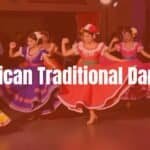

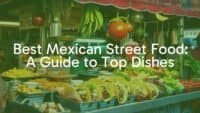
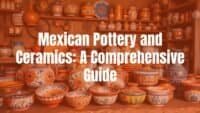

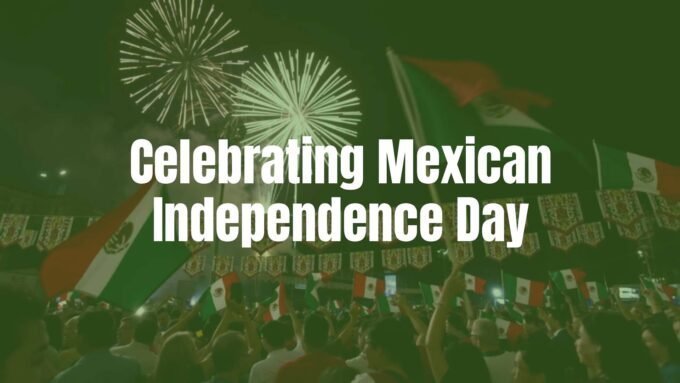
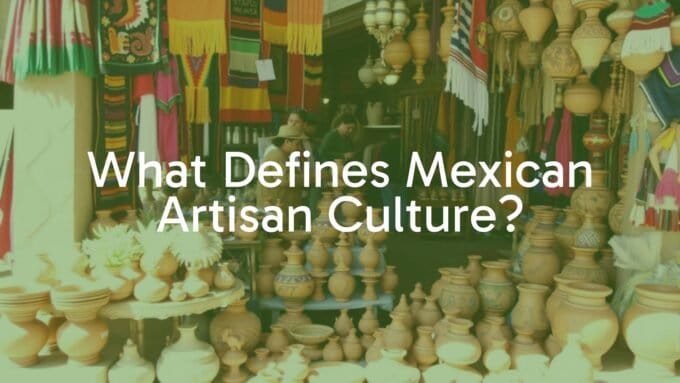
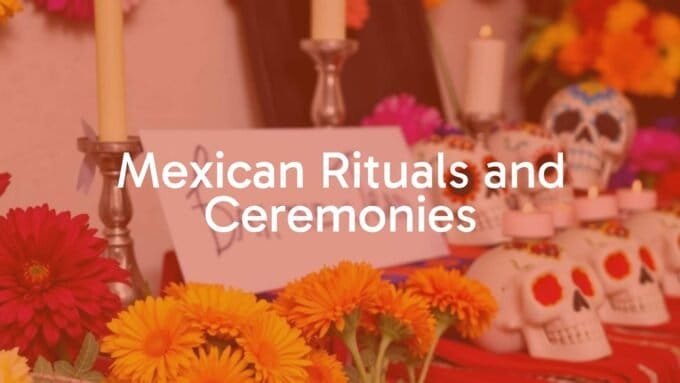
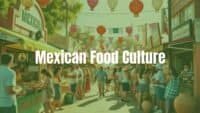
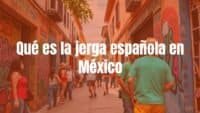
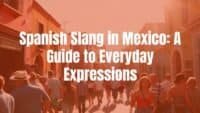
Leave a comment